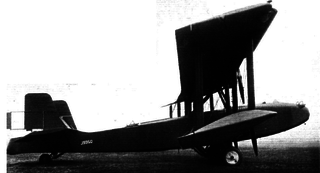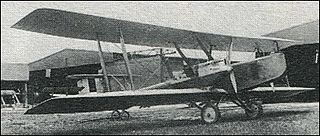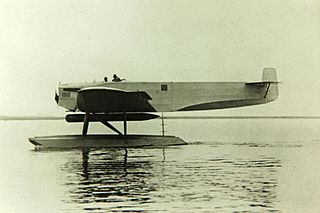
The Short Springbok was a two-seat, all-metal reconnaissance biplane produced for the British Air Ministry in the 1920s. All together six aircraft of the Springbok design were built but none entered service with the armed forces.

The Ansaldo A.120, sometimes called the FIAT A.120 since FIAT bought Ansaldo, was a reconnaissance aircraft developed in Italy in the 1920s.

The Bristol Type 148 was a two-seat, single-engine low-wing monoplane built in 1937 to an Air Ministry specification for an army cooperation aircraft. It lost in the competition to the Westland Lysander and did not progress past the two prototypes that were built.
The Royal Aircraft Factory F.E.4 was a twin-engine biplane aircraft built by the Royal Aircraft Factory in 1916. Intended as a cannon armed ground-attack aircraft, it was unsuccessful, only two being built.

The Fairey G.4/31 was a British single-engined, two-seat biplane contender for an Air Ministry specification for a multi-role or general purpose aircraft. Unsuccessful, only one was built.

The Miles M.9 Kestrel was a 1930s British single-engined tandem seat monoplane, intended as an advanced trainer. Only one Kestrel was built but it was developed into the Miles Master for the RAF and produced in large numbers at the start of the Second World War.

The sole Boulton & Paul P.32 was a British three-engined biplane built to an Air Ministry specification for a long range night bomber. A lack of engine availability slowed construction and by the time it went for tests the thinking on bomber types had moved on.
The Westland PV.7 was a private venture submission to a 1930s British specification for a general-purpose military aircraft with two crew. It was a single-engined, high-wing monoplane of promise, but was destroyed early in official tests.

The Piaggio P.3 was an Italian night bomber prototype built by Piaggio in 1923.
The Bernard H 110 was a single engine, single seat monoplane floatplane fighter designed for a French Navy competition. It flew in 1935 but had only made four test flights when the Bernard company was declared bankrupt, preventing further development.

The CANSA FC.20 was a twin engine reconnaissance bomber/ground attack monoplane designed and built in Italy in 1941. Several versions with different armament and engines were flown but only the FC.20bis ground attack variant reached squadron service, in very small numbers, before the 1943 armistice.

The CANT Z.515 was a twin engine monoplane floatplane designed and built for maritime reconnaissance in Italy at the start of World War II. It did not go into service.
The Caproni Sauro-1, or Caproni Tricap, was a light, single-engine cantilever monoplane, seating two in tandem, built in Italy in the early 1930s for touring. Despite good performance and favourable test reports, only one was built.
The CANSA C.4 was a single engine, open cockpit, tandem seat training aircraft and tourer flown in Italy in 1942.

The NVI F.K.35 or Koolhoven F.K.35 was a two-seat fighter aircraft built in the Netherlands during 1926. It was completed and exhibited but, through a combination of ground accident and financial problems, never flown.

The Fokker T.II or T.2 was a single engine floatplane designed in the Netherlands in the early 1920s as a torpedo bomber. Three were bought by the US Navy who tested them against other aircraft from the US and the UK. The T.IIs did not win further production orders but remained in service for several years.

The Fokker T.III or T.3 was a single engine floatplane designed in the Netherlands in the early 1920s as a bomber or torpedo bomber.

The Hanriot HD.15 was a French two seat fighter aircraft fitted with a supercharger for good high altitude performance, built in the 1920s. Three were ordered by Japan but lost at sea during delivery.

The CAMS 52 was a twin-engined floatplane torpedo-bomber. It was not ordered by the French Navy and only one CAMS 52 was completed. It first flew in the summer of 1930.
The Caproni Ca.66 and Caproni Ca.67 were Italian night bomber aircraft designed to re-equip the post-World War I Regia Aeronautica.















